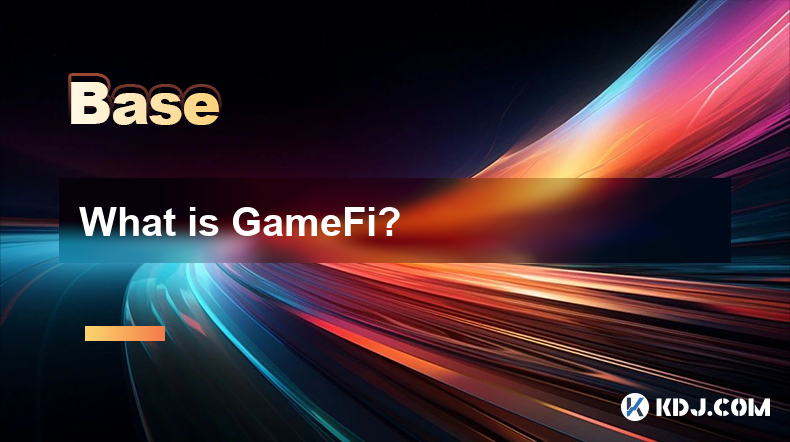-
 Bitcoin
Bitcoin $118400
0.39% -
 Ethereum
Ethereum $3814
2.17% -
 XRP
XRP $3.547
1.34% -
 Tether USDt
Tether USDt $1.000
0.00% -
 BNB
BNB $769.5
2.95% -
 Solana
Solana $191.7
6.36% -
 USDC
USDC $0.9999
0.01% -
 Dogecoin
Dogecoin $0.2722
7.75% -
 Cardano
Cardano $0.8995
5.59% -
 TRON
TRON $0.3158
-0.78% -
 Hyperliquid
Hyperliquid $47.37
4.46% -
 Stellar
Stellar $0.4848
3.54% -
 Sui
Sui $4.031
1.72% -
 Chainlink
Chainlink $20.11
3.94% -
 Hedera
Hedera $0.2832
3.16% -
 Avalanche
Avalanche $26.20
4.27% -
 Bitcoin Cash
Bitcoin Cash $530.5
0.67% -
 Shiba Inu
Shiba Inu $0.00001568
3.59% -
 Litecoin
Litecoin $118.4
1.42% -
 UNUS SED LEO
UNUS SED LEO $8.976
-0.23% -
 Toncoin
Toncoin $3.349
2.54% -
 Polkadot
Polkadot $4.590
2.54% -
 Uniswap
Uniswap $10.56
-0.59% -
 Ethena USDe
Ethena USDe $1.001
0.00% -
 Monero
Monero $327.7
0.39% -
 Pepe
Pepe $0.00001422
2.62% -
 Bitget Token
Bitget Token $4.973
-1.22% -
 Dai
Dai $1.000
0.02% -
 Aave
Aave $331.9
1.59% -
 Bittensor
Bittensor $429.6
-0.56%
What is GameFi?
GameFi integrates blockchain technology into gaming, granting players ownership, financial incentives, and a voice in shaping the gaming experience through immersive decentralized platforms.
Feb 16, 2025 at 09:06 am

GameFi: Redefining Gaming with Blockchain Technology
GameFi, a portmanteau of 'gaming' and 'finance,' represents the intersection of blockchain technology and the gaming industry. It leverages decentralized and programmable blockchain platforms to create immersive gaming experiences that empower players through ownership, financial incentives, and governance.
Key Points:
- GameFi enables players to earn rewards and generate value through in-game activities.
- Blockchain technology ensures transparency, immutability, and verifiable asset ownership in GameFi environments.
- GameFi fosters community engagement by allowing players to participate in decision-making and influence game development.
The Evolution of GameFi
1. Collectible Games:
- These games feature digital assets represented as non-fungible tokens (NFTs), providing unique ownership and scarcity.
- Players collect, trade, and battle with these assets within the game world.
- Examples include Axie Infinity, The Sandbox, and CryptoKitties.
2. Play-to-Earn (P2E) Games:
- P2E games incentivize players to participate in-game activities by rewarding them with cryptocurrencies or tokens.
- This model allows players to earn from their gaming experience, transforming it into a potential income source.
- Examples include Thetan Arena, Decentraland, and Alien Worlds.
3. Metaverse Games:
- Metaverse games create virtual worlds where players interact, socialize, and participate in various activities.
- These games often incorporate NFTs and P2E mechanics to enhance player ownership and engagement.
- Examples include Sandbox, Bloktopia, and Decentraland.
4. Guilds and DAOs:
- Guilds in GameFi are player-owned organizations that provide support, resources, and cooperation to members.
- Decentralized autonomous organizations (DAOs) bring governance and decision-making to GameFi communities.
- Both guilds and DAOs empower players to shape the future of their in-game worlds.
Benefits of GameFi
- Ownership and Scarcity: GameFi provides players with verifiable digital asset ownership, enhancing collectability and value.
- Financial Incentives: P2E models allow players to generate income from their gaming activities.
- Community Engagement: GameFi fosters a sense of community by connecting players through in-game interactions and governance participation.
- Innovation and Customization: Blockchain technology enables the development of new gaming concepts and customization options, enhancing player experiences.
- Transparency and Accountability: Blockchain ensures the transparent and verifiable tracking of in-game transactions and assets.
FAQs
What are the challenges faced by GameFi?
- Technical Complexity: Blockchain technology can be challenging to integrate into gaming environments, requiring technical expertise and development resources.
- Fluctuating Token Values: The value of in-game cryptocurrencies and tokens can be volatile, potentially affecting player rewards and investments.
- Regulation and Legal Concerns: The legal landscape surrounding GameFi remains uncertain, requiring clarification of regulatory frameworks for digital asset ownership and in-game currencies.
How does GameFi differ from traditional gaming?
- Player Ownership: GameFi empowers players with verifiable ownership of their in-game assets, enabling them to control their digital items and collectibles.
- Financial Incentives: P2E models provide financial rewards for player participation, transforming gaming into a potential income-generating activity.
- Community Influence: GameFi often incorporates governance mechanisms that allow players to shape the development and decision-making processes of their in-game worlds.
What are the future prospects of GameFi?
- Metaverse Gaming: The integration of GameFi with metaverse concepts promises immersive and interconnected virtual worlds that offer a wider range of gaming experiences.
- AI and Machine Learning: The use of AI and machine learning technologies in GameFi can enhance gameplay, create more dynamic experiences, and personalize player rewards.
- Expansion to Mobile Gaming: GameFi adoption in mobile gaming ecosystems could significantly broaden the reach and appeal of blockchain-based gaming.
Disclaimer:info@kdj.com
The information provided is not trading advice. kdj.com does not assume any responsibility for any investments made based on the information provided in this article. Cryptocurrencies are highly volatile and it is highly recommended that you invest with caution after thorough research!
If you believe that the content used on this website infringes your copyright, please contact us immediately (info@kdj.com) and we will delete it promptly.
- Saylor, Trump, and Bitcoin: A New York Minute on Crypto's Power Trio
- 2025-07-22 00:50:12
- Strategy, Bitcoin, and $122,000: A New York Minute on Crypto's Latest Moves
- 2025-07-22 00:50:12
- BitMart, Pudgy Penguins, and the Web3 Ecosystem: A New York State of Mind
- 2025-07-22 00:30:13
- Ether Machine's NASDAQ Ambition: A $1.5 Billion Ethereum Play?
- 2025-07-22 00:30:13
- AVAIL, VENOM, Token Release Mania: What You Need to Know, New Yorker Style
- 2025-07-21 23:30:13
- Crypto Purchases: Your No-Stress Guide to Spending Digital Dough
- 2025-07-21 22:50:13
Related knowledge

What is the difference between CeFi and DeFi?
Jul 22,2025 at 12:28am
Understanding CeFi and DeFiIn the world of cryptocurrency, CeFi (Centralized Finance) and DeFi (Decentralized Finance) represent two distinct financia...

What is the difference between a sidechain and a Layer 2?
Jul 20,2025 at 11:35pm
Understanding the Concept of SidechainsA sidechain is a separate blockchain that runs parallel to the main blockchain, typically the mainnet of a cryp...

What is the Inter-Blockchain Communication Protocol (IBC)?
Jul 19,2025 at 10:43am
Understanding the Inter-Blockchain Communication Protocol (IBC)The Inter-Blockchain Communication Protocol (IBC) is a cross-chain communication protoc...

How does sharding improve scalability?
Jul 20,2025 at 01:21am
Understanding Sharding in BlockchainSharding is a database partitioning technique that is increasingly being adopted in blockchain technology to enhan...

What is the "crypto trilemma" of scalability, security, and decentralization?
Jul 19,2025 at 06:28pm
Understanding the Concept of the Crypto TrilemmaThe crypto trilemma refers to the challenge of simultaneously achieving scalability, security, and dec...

What is a cliff and vesting schedule in tokenomics?
Jul 20,2025 at 10:28am
What Does a Cliff Mean in Tokenomics?In tokenomics, a cliff refers to a specific period during which token holders are not allowed to access or transf...

What is the difference between CeFi and DeFi?
Jul 22,2025 at 12:28am
Understanding CeFi and DeFiIn the world of cryptocurrency, CeFi (Centralized Finance) and DeFi (Decentralized Finance) represent two distinct financia...

What is the difference between a sidechain and a Layer 2?
Jul 20,2025 at 11:35pm
Understanding the Concept of SidechainsA sidechain is a separate blockchain that runs parallel to the main blockchain, typically the mainnet of a cryp...

What is the Inter-Blockchain Communication Protocol (IBC)?
Jul 19,2025 at 10:43am
Understanding the Inter-Blockchain Communication Protocol (IBC)The Inter-Blockchain Communication Protocol (IBC) is a cross-chain communication protoc...

How does sharding improve scalability?
Jul 20,2025 at 01:21am
Understanding Sharding in BlockchainSharding is a database partitioning technique that is increasingly being adopted in blockchain technology to enhan...

What is the "crypto trilemma" of scalability, security, and decentralization?
Jul 19,2025 at 06:28pm
Understanding the Concept of the Crypto TrilemmaThe crypto trilemma refers to the challenge of simultaneously achieving scalability, security, and dec...

What is a cliff and vesting schedule in tokenomics?
Jul 20,2025 at 10:28am
What Does a Cliff Mean in Tokenomics?In tokenomics, a cliff refers to a specific period during which token holders are not allowed to access or transf...
See all articles

























































































